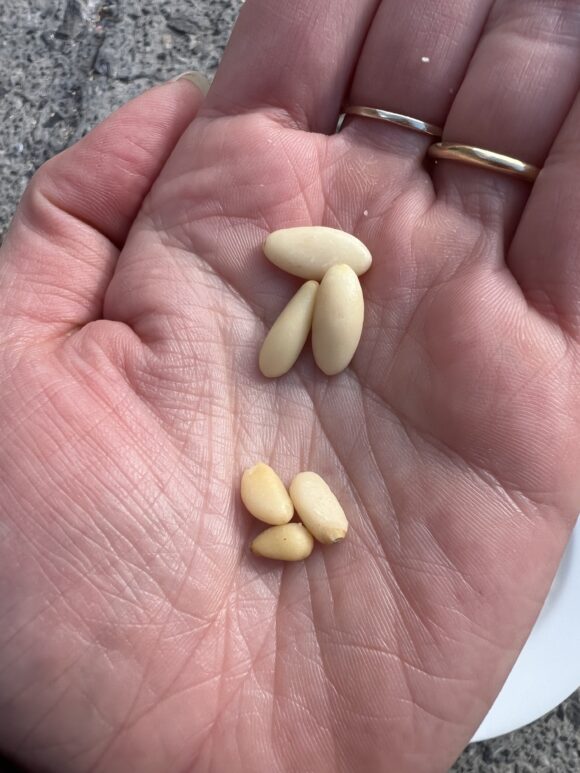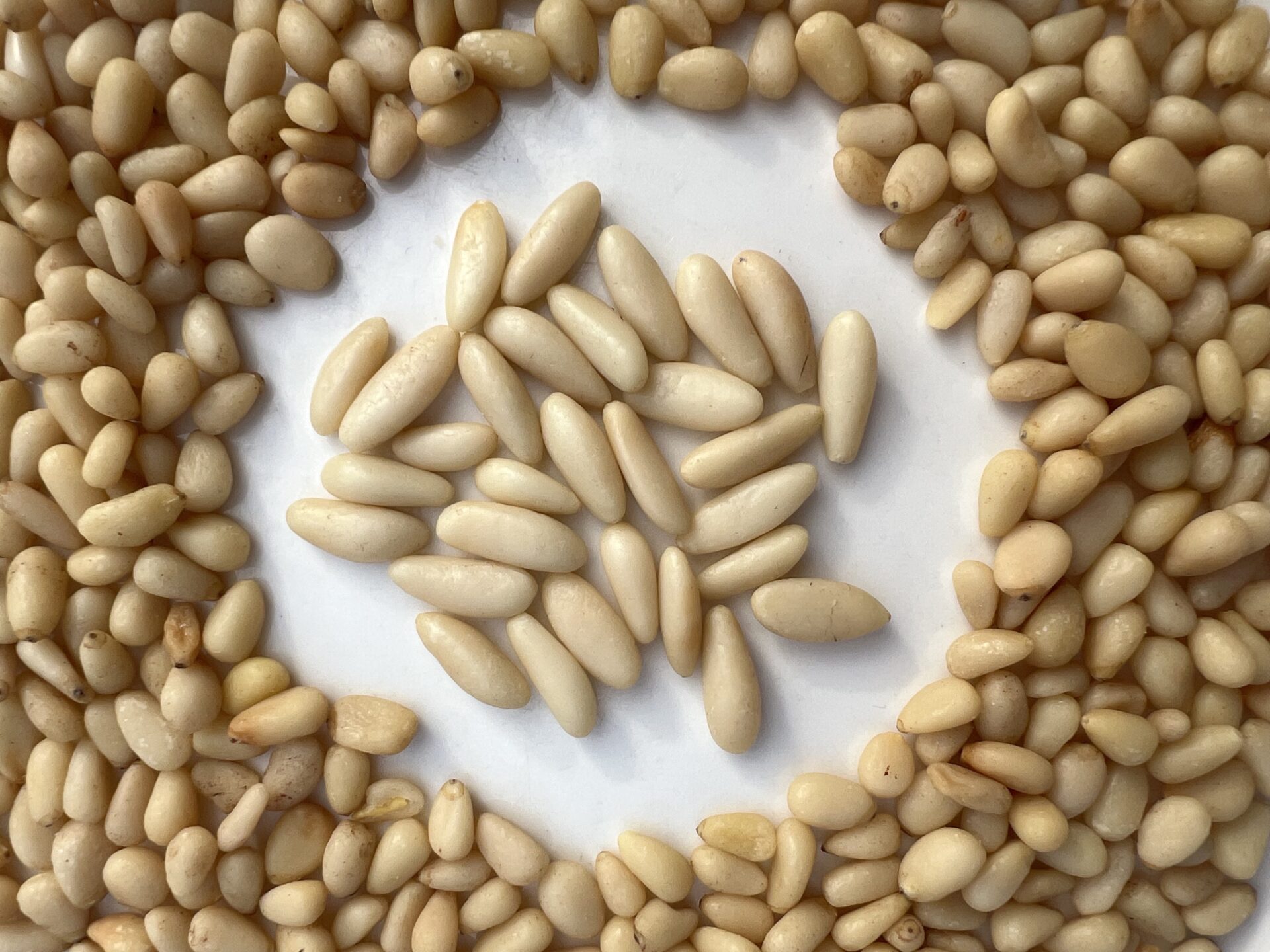Real Italian pine nuts really make a difference in your recipes. It takes only one wrong pine nut to spoil the flavor of the most fabulous of dishes. The pine nuts you find at your average grocery store just don’t cut it. Not only do they look different, they taste different too. Why? Because they belong to a different species altogether!
Look closely at the labeling on grocery store pine nuts and you’ll find most of them come from either China or Siberia. According to the FDA, those nuts belong to a mix of species, including Pinus armandii and Pinus sibirica. Italian pine nuts, on the other hand, come from Pinus pinea trees.
Italian pine nuts taste and look different
What truly sets Italian pine nuts apart is their flavor. When we tasted our Italian pine nuts side by side with those imported from China, we were blown away by the difference. While the Chinese nuts initially had a strong flavor, their taste quickly dissipated into an unpleasant, chemical, and metallic aftertaste. Plus, many of the nuts were rancid, further spoiling the experience. On the other hand, the Italian pine nuts had a persistent, resinous, buttery flavor with the aroma of pine and fresh tree sap.
Appearance is what gives them away: Ruth Reichl, a real pine nut fan, points out in her newsletter that the first difference you’ll notice is the size. Italian pine nuts are more than twice the length of your typical grocery store nut. Not to mention the color: Pinoli Italiani have a completely natural creamy, ivory tint.

How to store and use Italian pine nuts.
Our real Italian pine nuts come from the private stash of Roberto Panizza, aka “the Pesto King”. If his Pesto Genovese is the best in the world, he can thank his obsession for raw ingredients. No need to say: he only uses the highest quality Italian pine nuts in his award-winning pesto.
The production process of these precious nuts is entirely manual. Artisans hand-pick each pine cone from the tree and bring them to a small workshop. There, the cones are lightly steamed to release the treasure within. Since they’re freshly shelled right before they’re shipped over to us, we’re never worried about rancidity. Once you open the package, store your nuts in a sealed glass jar at room temp or in the fridge, and you shouldn’t be either.
The Pinus pinea trees, also known as the umbrella pine, stone pine, or parasol pine, are native to the Mediterranean. Italians have used pine nuts in their recipes for millennia. One of their most delicious applications is, of course, pesto. While they’re essential in the classic Genovese version, we also love them in pesto alla Cetarese or in our sun-dried tomato pesto. Pine nuts are also a key ingredient in eggplant caponata, and we love them in this wintery butternut squash version as well. They’re a great addition to your baked goods too, like this orange olive oil cake inspired by a recipe of Dario Cecchini + Faith Willinger.
